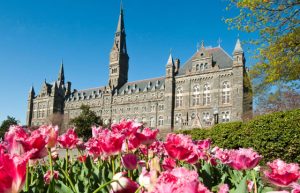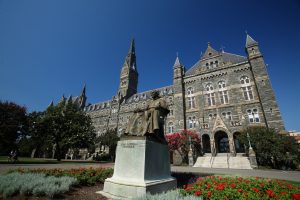To the editors,
Congratulations on the new Safeway article (“D.C. Through It’s Stomach,” cover, March 22, 2007), looking at the different neighborhoods of D.C. through the lens of our Safeways is a great concept and was well-executed. As a former Voice writer and current Southeast D.C. resident, my only concern was with the portrayal of the Southeast Safeway, where I happen to shop. The experience reflected in the article is very different from my own and I get the feeling that your reporter got a distorted view of the store and the neighborhood during his or her brief stop.
In the evenings and weekends, when I shop, the store is always bustling, full with a diverse crowd of young professionals like me, families, and long-time residents. There is a different dynamic during the middle of the day and late at night, however, and I’m concerned that is the view your story presents. I have run into old Georgetown friends in the produce section of the Southeast Safeway on numerous occasions. I have certainly never seen anyone sleeping on a cart, and though I have had an experience with an intoxicated homeless person shoplifting, it was at the “Social” Safeway in Georgetown.
The neighborhood doesn’t have the mansions of Georgetown, but I don’t think your article portrays it quite fairly. From the passage, “The road between the Safeway and the closest metro stop is lined with run-down houses…” I get the impression that your reporter walked directly from the run-down Potomac Ave metro stop to the store and back without getting a full impression of the neighborhood. Walk just a block north or west and you’ll see recently painted rowhouses with bright green yards or brand new apartment buildings with nary a bar or fence in sight. The Safeway is just five blocks from Eastern Market and a couple more blocks from Capitol Hill, home to numerous wealthy residents to whom the store’s recent renovation was undoubtedly intended to attract.
Nor do I think interviewing a single Safeway employee is a good gauge of the friendliness of the store or the area. Like many Georgetown students, I have had horrible experiences waiting in line for twenty minutes at the “Social” Safeway because they chose to open only a few checkout lines. At the Southeast Safeway, I have always been treated courteously and employees have often gone out of their way to help, by suggesting an alternative item that was on sale or patiently escorting me to find an elusive item. As a cashier, representing the store to a stranger writing a news story is very different than everyday customer service and may understandably be nerve-racking. I was also taken aback by your assertion that shoppers rudely refused to be interviewed. The friendliness of the neighborhood has been a pleasant surprise, as I routinely receive greetings of “Good morning” or an enthusiastic “Hoya Saxa!” (when I’m wearing my JTIII shirt, of course) from complete strangers on the sidewalk, which would be unheard of in tony Burleith or posh Glover Park.
I appreciate the story and I’m particularly glad you didn’t use the outdated and misleading UnSafeway nickname (hopefully not just because you hadn’t heard of it). The Voice has always helped Georgetown students get a feel for what lies beyond the front gates, but I fear the shallow reporting of this story encourages harmful stereotypes of Southeast D.C. and may lead readers to avoid this welcoming and exciting area of the city altogether.
Dan Joyce
SFS 06




